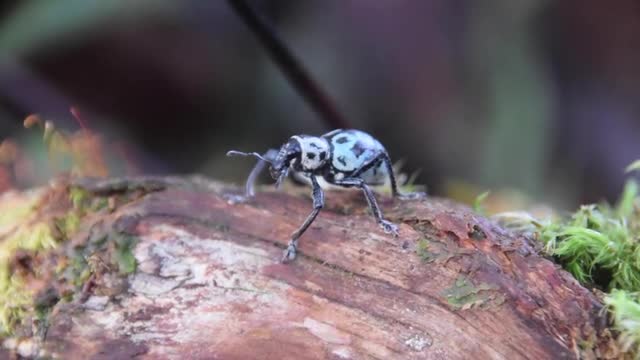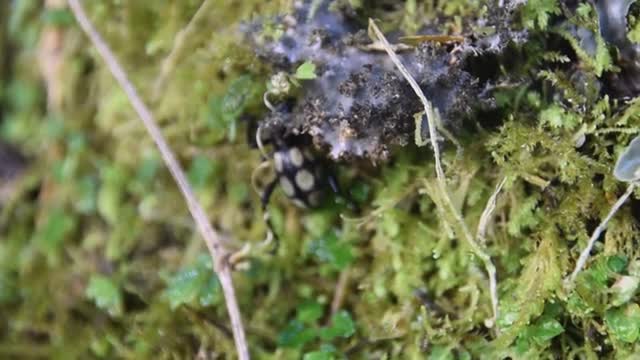MindanaoMimics
There’saspeciesofjewelweevilcalledPachyrhynchusreicherti.Itsblackandspottedbodyhasauniquepattern.Itselytraarefusedtogether.Itcannotfly.It’stootoughtobitethrough.Anditsstrongcolorsandmarkingstellpredatorstostay away.
WhenCabrasfirstspottedanewspecies,Metapocyrtuswillietorresi,shemistookitforPachyrhynchusreicherti.Ithassimilarcolorsandmarkings.Ithastough,fusedelytra.Neitherbeetlewouldmakeagoodmeal.So,whywasonecopyingthe other?
ThephenomenoniscalledMüllerianmimicry.That’swhentwoequallyharmfulthingshaveevolvedtoresembleeachother.Whenbeetleshavesimilarcolorsandpatterns,predatorslearnthattheyrepresentdangerous,foul-tasting,orevenpoisonousbeetles.Andpredatorsstay away.
Itdoesn’tendthere.Athirdbeetle,Doliopsdaugavpilsi,looksalotliketheothertwo.It’salonghornbeetle.Ithasasoft shell—onethatpredatorscouldeasilybite through.
Pachyrhynchus reicherti
Metapocyrtus willietorresi
Byhavingcolorsandpatternssimilartotheweevils,thelonghornstayssafe.ThisisBatesianmimicry.Anedibleinsectwithfewdefenseskeepspredatorsawaybylooking dangerous.
HereareafewexamplesofthebeetlesCabrassawduringherfieldworkonMindanao.Themimicsstronglyresembletheir models.
MODEL
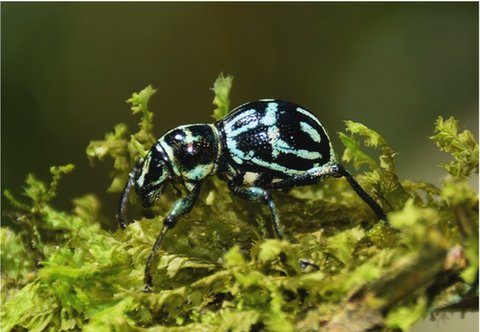
Model: Metapocyrtus kitangladensis
MIMIC
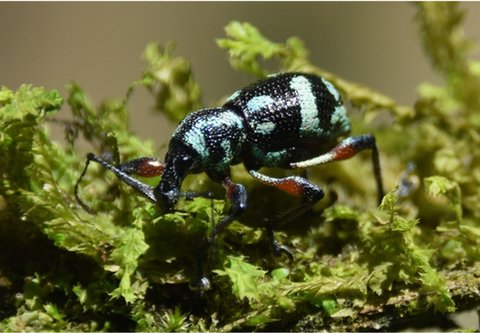
Mimic: Coptorhynchussp.
MODEL
Model: Pachyrhynchus tikoi

MIMIC
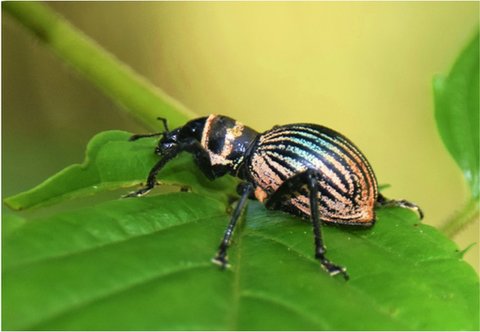
Mimic: Metapocyrtussp.

Totestahypothesis,Cabrasusedfakebeetlesmadeofmodelingclay,liketheoneshownhere.Shewantedtoseeifpredatorswouldreacttothebeetle’swarning colors.
Testing aTheory
Cabraswonderedifshewastheonlyonebeingfooledbytheselook-alikes.Shetriedanexperiment.Sheandherteammadefakebeetlesfrommodelingclay.TheylookedlikePachyrhynchusreicherti.Shesetthemoutinplaceswherethesebeetleswerecommonandinplaceswheretheywerenot.Thenshesetupcamerastoseewhatwould happen.
Wherethebeetleswerecommon,predatorsavoidedtheclaybeetles.Theyhadlearnedwhatthosecolorsandpatternsmean.Intheplaceswherethebeetleswerelesscommon,morepredatorstriedtoattack.Theyhadnotyetlearnedtostay away.
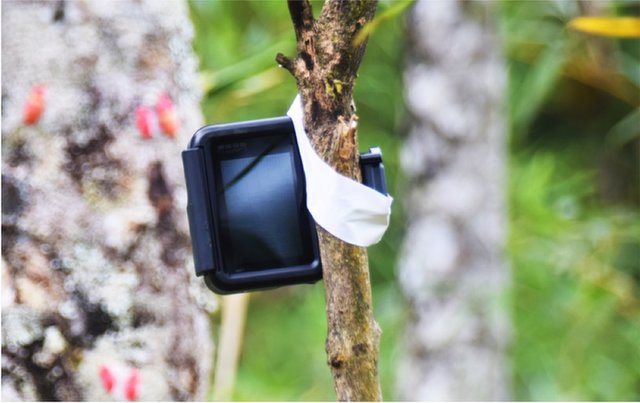

acamera trap

InMindanao,therecouldbemanynewspeciesto discover.
Cabrasstillhasmanyquestionsshewantsanswersto.ButalotoflandonMindanaoisbeingclearedawayforfarmingandhouses.Infiveto10years,shemightnotbeabletofindthesebeetlesintheirnatural habitat.
Withtheclockticking,Cabrasisdoingherbesttodiscover,observe,andrecordthebiodiversitythatsheseesinMindanao.Fornow,hereyesaretrainedon weevils.
